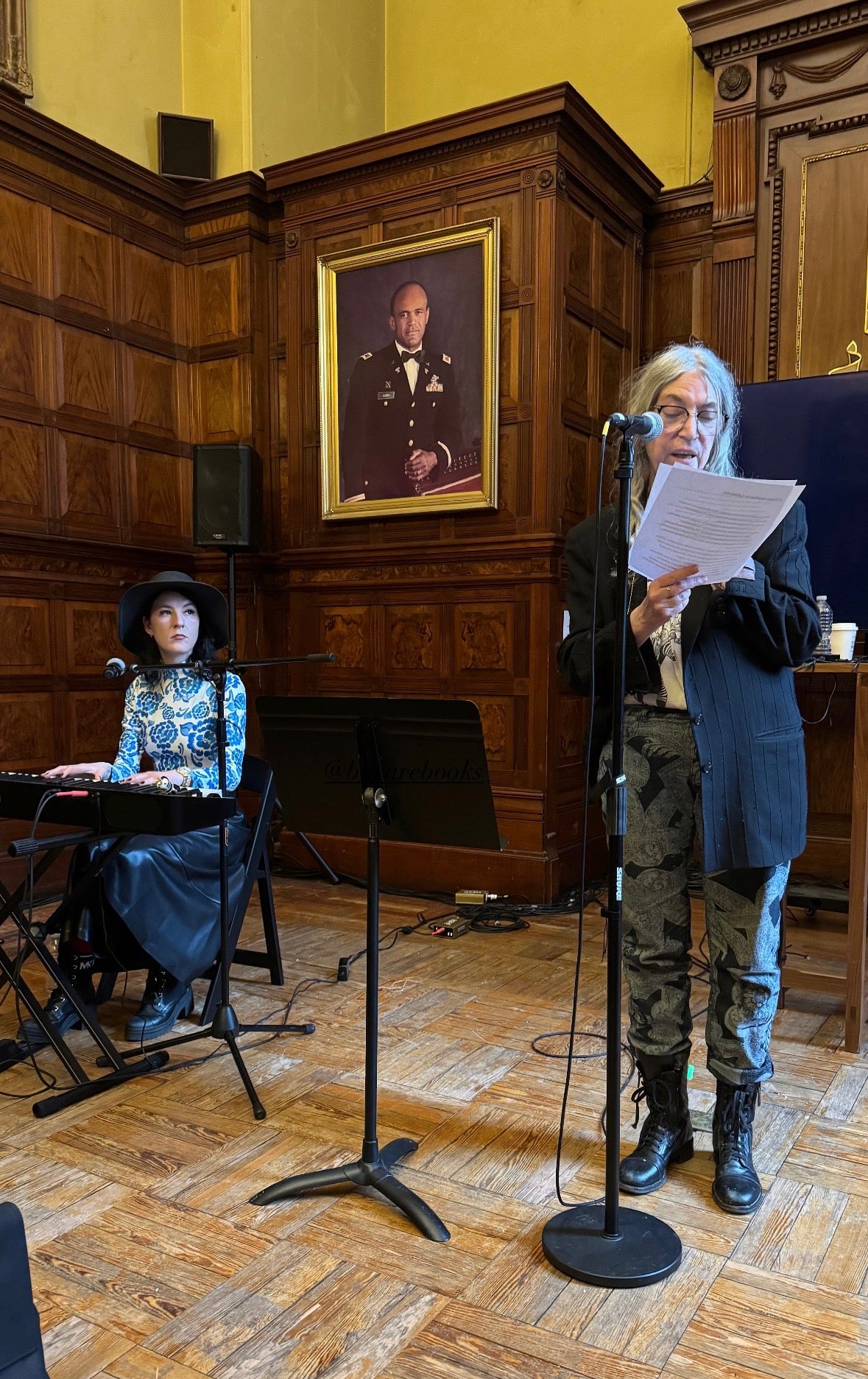Patti Smith: How a 200-year-old book by Charlotte Brontë instantly took me back to my childhood
Today, nearly two centuries after it was written by the then 13-year-old, ‘A Book of Ryhmes’ is published for the very first time, writes rock legend and poet Patti Smith – like Charlotte, I was the oldest and could often be found scribbling little stories to amuse my younger siblings

She sits writing at the kitchen table as the surrounding countryside is assaulted with heavy wind and rain. Beyond her home, a bleak parsonage is the overcrowded village of Haworth, close neighbour of the industrial sprawl of Keighley. The unsanitary village is a place of suffering and disease, where life expectancy is low, and half the children die before the age of six.
Yet on 26 October 1829, 13-year-old Charlotte Brontë wrote nothing of this. Nothing of the horrendous odours. Nothing of the empty cupboards, the endless chores. Nothing of the deaths of her elder sisters and mother. Nothing of the fear of losing her father, who had agonised for months with a lung ailment. Instead, on tiny, precious scraps of paper, she composed a contemplative hymn to beauty. Seeking to define it, despite cruel circumstances, she takes a mental stroll in a welcoming forest where the elements blossom in perfect harmony. Then as the revelation of nature’s beauty dissipates, she resorts to the burgeoning terrain of her own imagination.
Charlotte channels the reflections of one of her own characters, striding through a Canadian forest. Through him, she portrays with mysterious accuracy, the majesty of the great trees that rise like the masts of tall ships. In late November she unpredictably re-imagines the time of Babel, expanding the Genesis tale. Wrestling with an unbridled passion for words she evokes the atmosphere and those doomed souls attempting to pierce the whereabouts of God with the construction of a forbidden tower.

Her description, mixing the unexpected with the prosaic, suggests panels of the Babel tower painted by Bruegel. Suddenly she drops down to Earth and offers a quiet, lucid little piece, 14 lines that she identifies as a sonnet. She heralds the magnificence of nature yet reminds us of the jewels of the seemingly commonplace. “Lovely is the bright rainbow but lovelier still the swan’s neck of snow.” Simplicity so acutely articulated, it brought me to tears.
I was privileged to personally view this tiny miracle, Charlotte’s chapbook, on her birthday. Though written nearly 200 years ago, it has maintained the freshness of youth. It is not simply a handful of juvenile verses, but the manifestation of an ambitious dreamer. The sight of it spun me into the realm of my own childhood.
Like Charlotte, I was the oldest and could often be found scribbling little stories to amuse my younger siblings. I could access that feeling, when solitude surges into a thousand visions, coupled with the unspoken desire to one day create books read by others. Though I had neither her vocabulary nor precocious literary skills, I recognised the energy, the concentration, the power of invention that a young writer wields as a benevolent weapon.
The Brontë siblings created worlds filled with heroes and produced strange maps of new lands known only to them. Collectively and feverishly the four sat at the wooden kitchen table, constructing their own Game of Thrones. But in 1829, from October to December, Charlotte was compelled to create her solitary effort.
Again, I picture her sitting, the parsonage bleak, the night ominous, warmed by her own creative impulse. In the last precious scraps, she returns to the rich tapestry of her boundless imagination. In the centre of December, with frost obscuring the view, and the wild wind causing the heart to tremble she writes of dead winter mystically transformed. But Charlotte, as if rudely awakened from her own spell, produces her last words in “Autumn Song”, stunned by the reality of the harshness of decay, nature’s waning day.
How amazing the scope of the mind of this adolescent girl who would later pen the classic Jane Eyre and the masterpiece Villette at that same wood kitchen table. She possessed the rare ability to open herself to the darker elements and transform them. For through all loss and hardship, she forever harboured the secret knowledge of her own powers, that at 13 she laboured to nourish and express in the tiny Book of Ryhmes, Charlotte’s young season.
Today, almost two centuries after it was written by then 13-year-old Charlotte Brontë, ‘A Book of Ryhmes’ will be published for the first time. The hardback anthology of 10 poems has been carefully transcribed and is accompanied by a foreword by legendary singer, songwriter, poet, painter, author and photographer, Patti Smith. The original book is on display at the Brontë Parsonage Museum and the new publication is available to buy from www.bronteshop.org.uk
Join our commenting forum
Join thought-provoking conversations, follow other Independent readers and see their replies
Comments